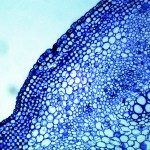Link to Pubmed [PMID] – 28242623
J. Leukoc. Biol. 2017 05;101(5):1181-1190
Type I IFN can exert pro- and anti-inflammatory activities in the immune system. Here, we have investigated the mechanism by which IFN-α enhances early expression of the anti-inflammatory cytokine IL-10 in human CD45RACD4 T cells. With the use of transcriptomic and biochemical approaches, we found distinct and combined contributions of the IFN and the TCR signaling pathways to the induction of and the basic leucine zipper activating transcription factor-like () family members. Moreover, IFN-induced STAT3 phosphorylation was prolonged by the TCR response, whereas IFN-induced STAT2 phosphorylation was of long duration. With the use of RNA interference (RNAi), we identified STAT3 as the major actor and STAT2 as a contributor of the IFN action on Upon TCR/IFN costimulation, STAT3 directly bound at the conserved noncoding sequence (CNS)- 9, an enhancer element known to recruit BATF in CD4 T cells. The cosilencing of the 3 resulted in an overall reduction of expression, but the promoting activity of IFN-α was retained. These results support the notion that the IFN action is indexed on BATF function and provide evidence for a cooperation between BATFs and STAT3, the latter being activated via early IFN and delayed TCR effects.




